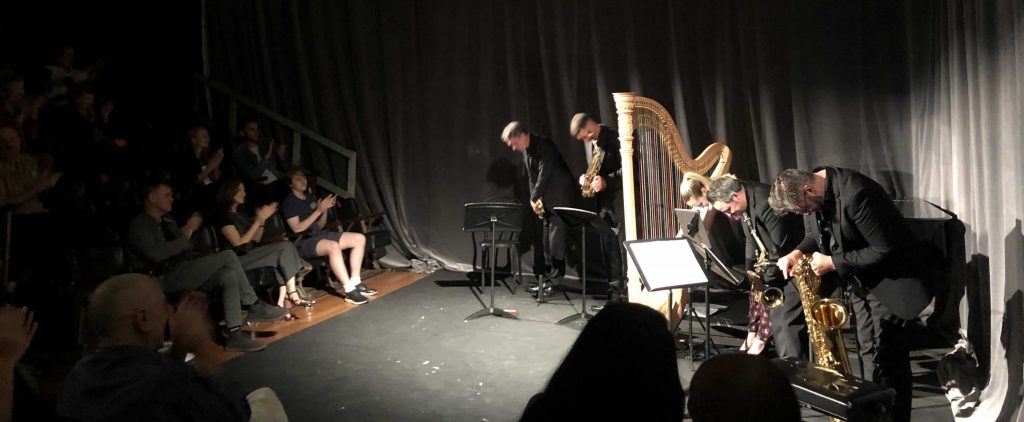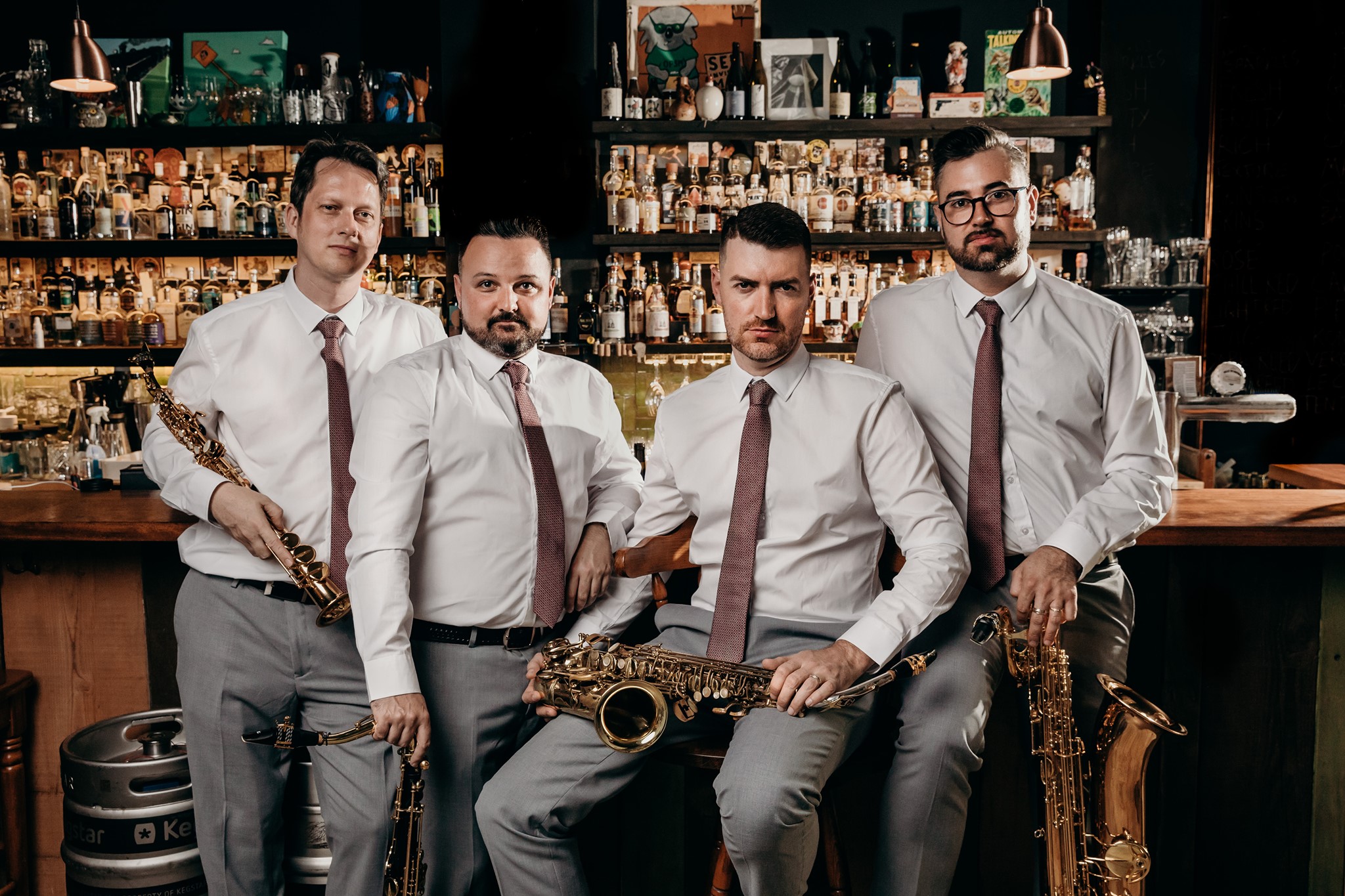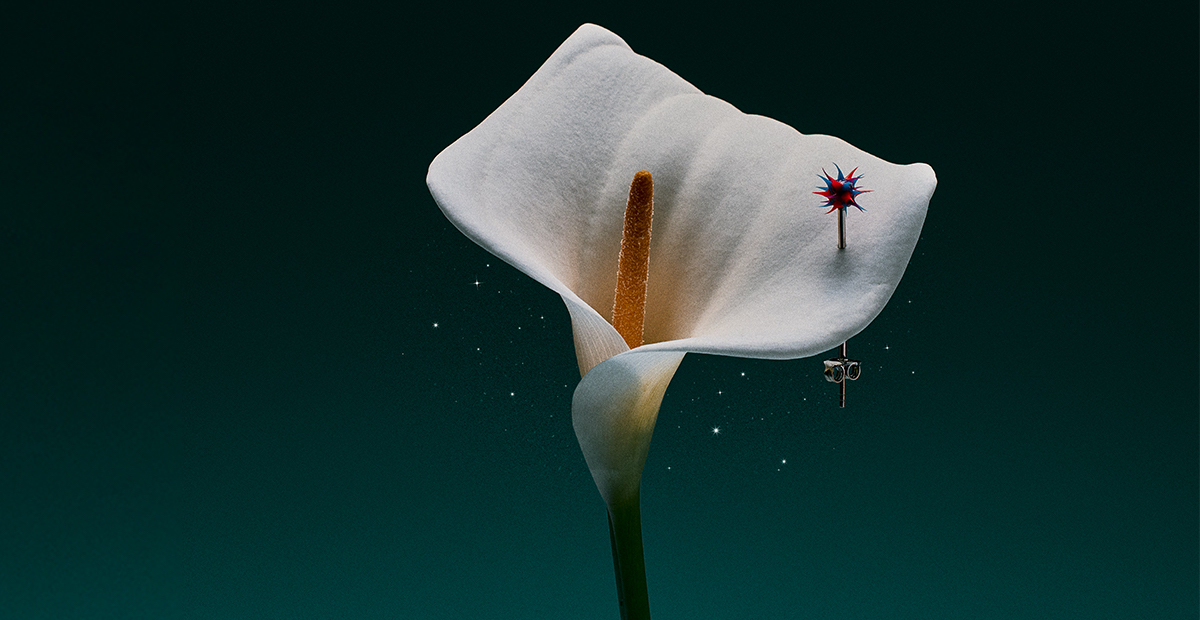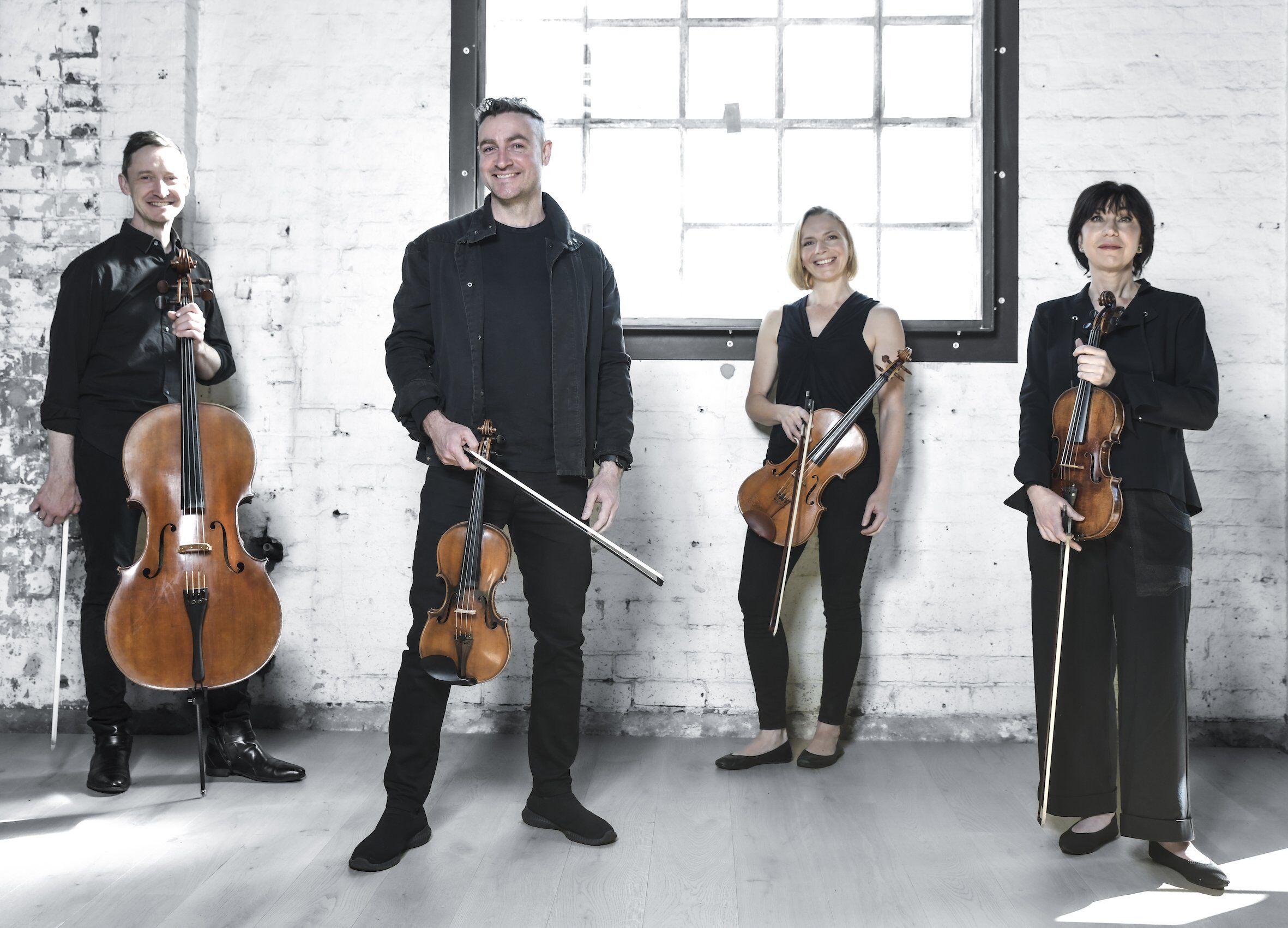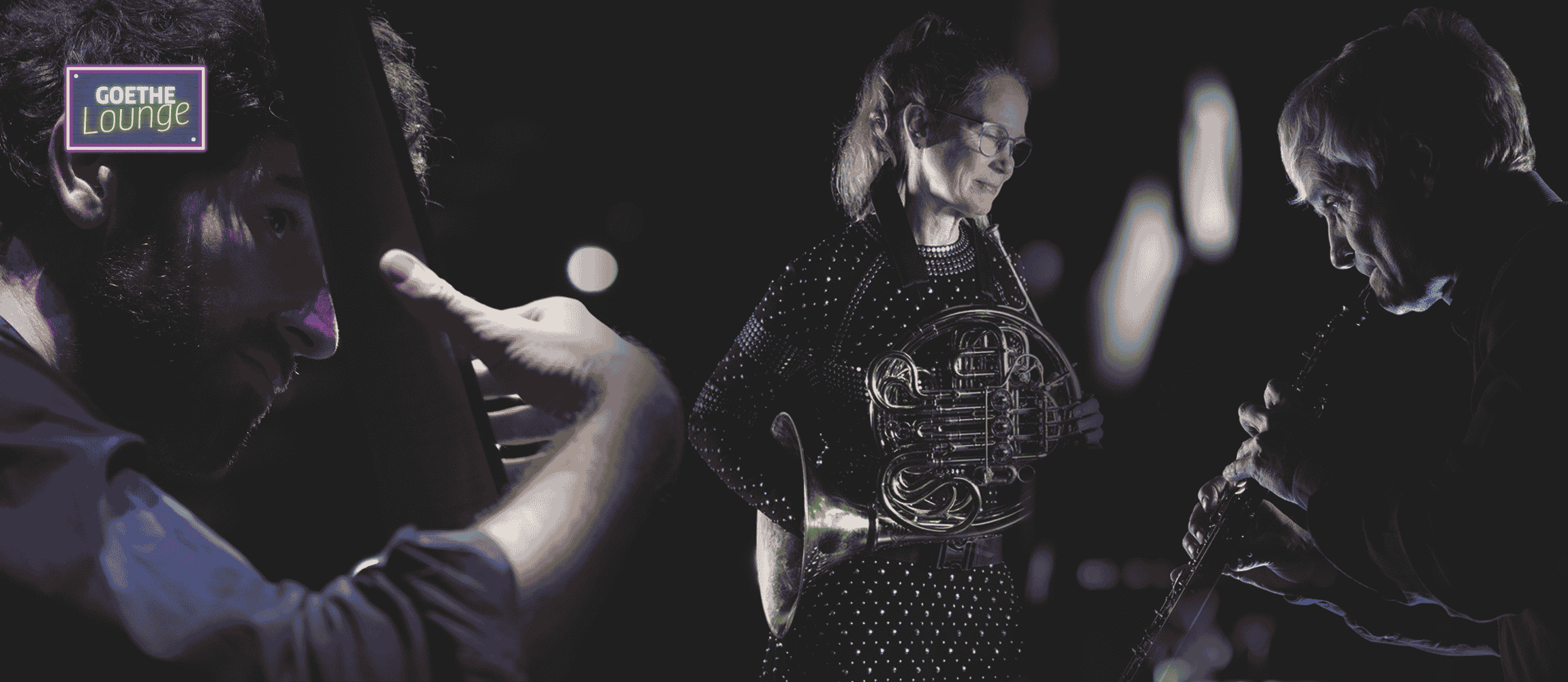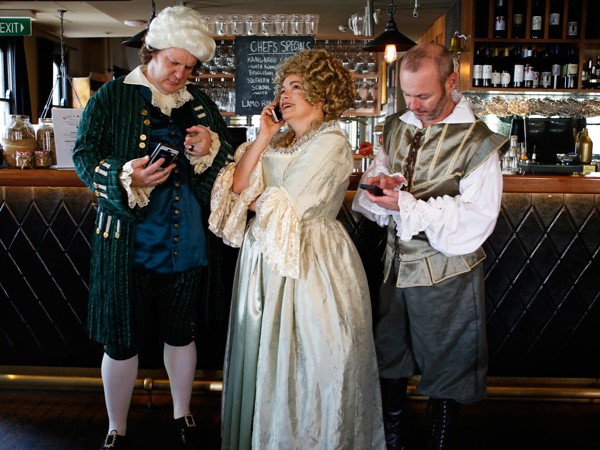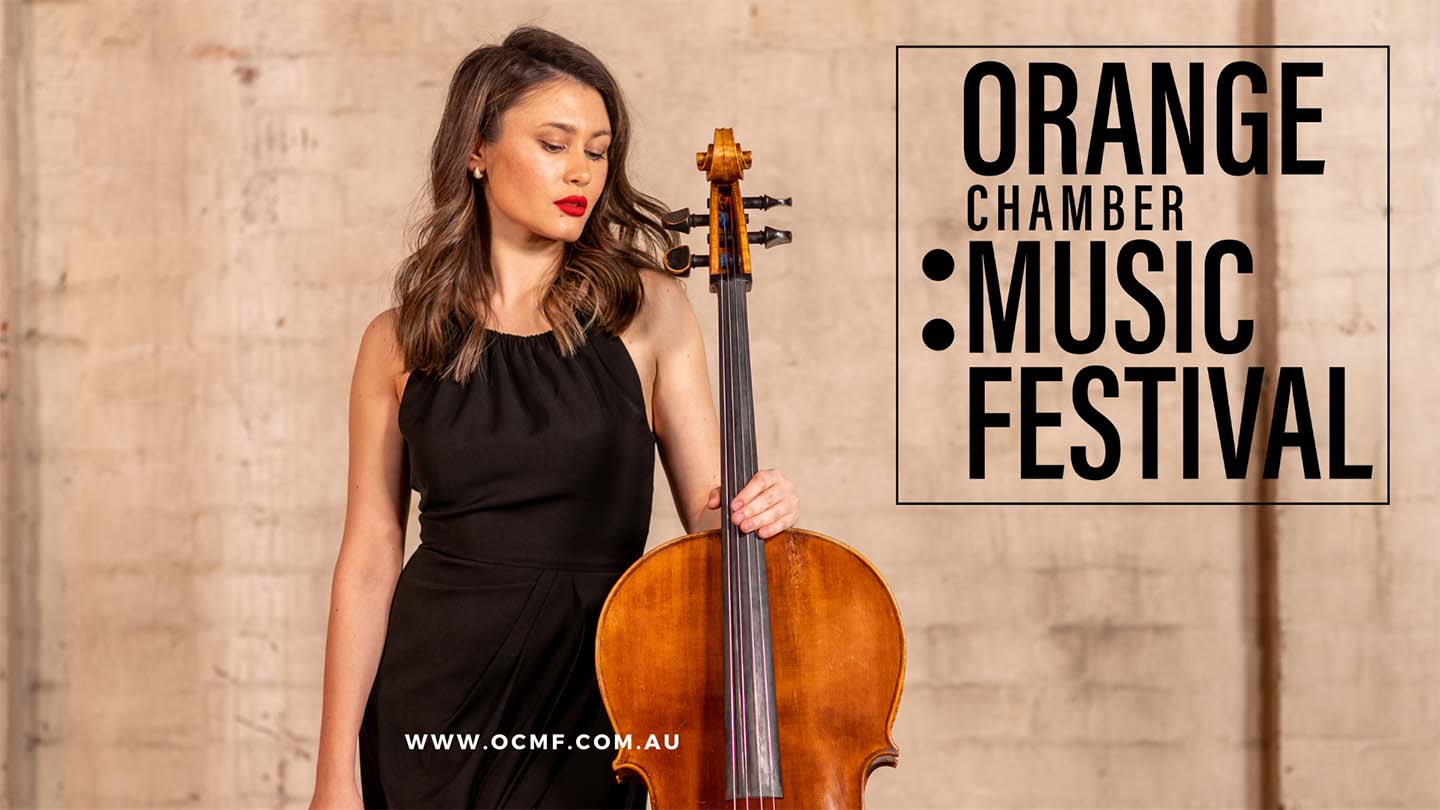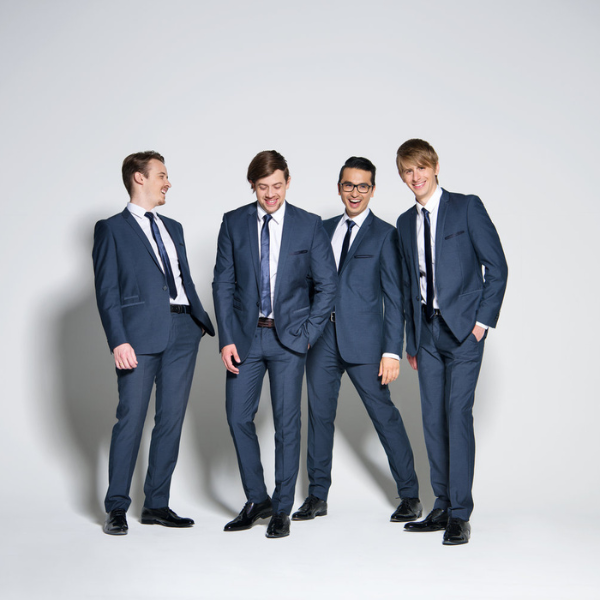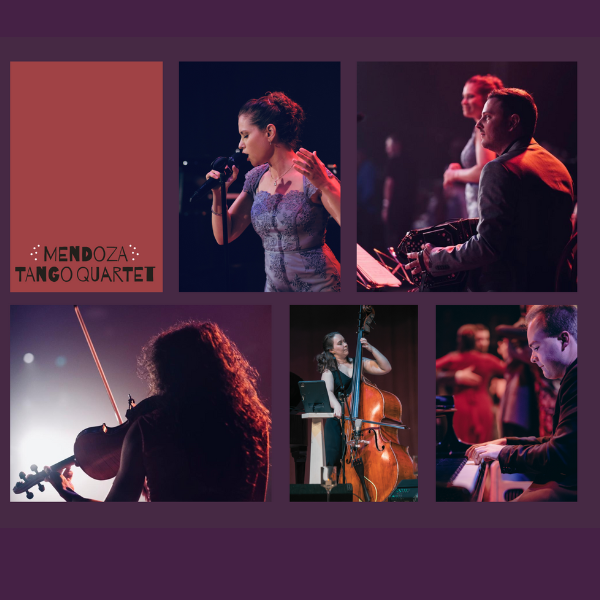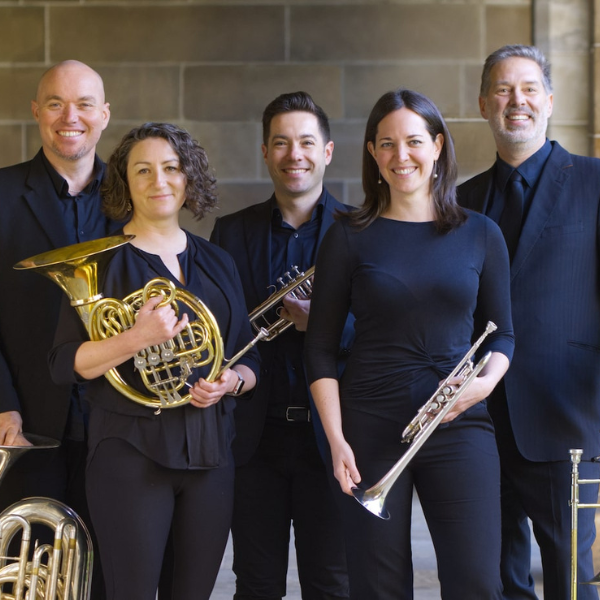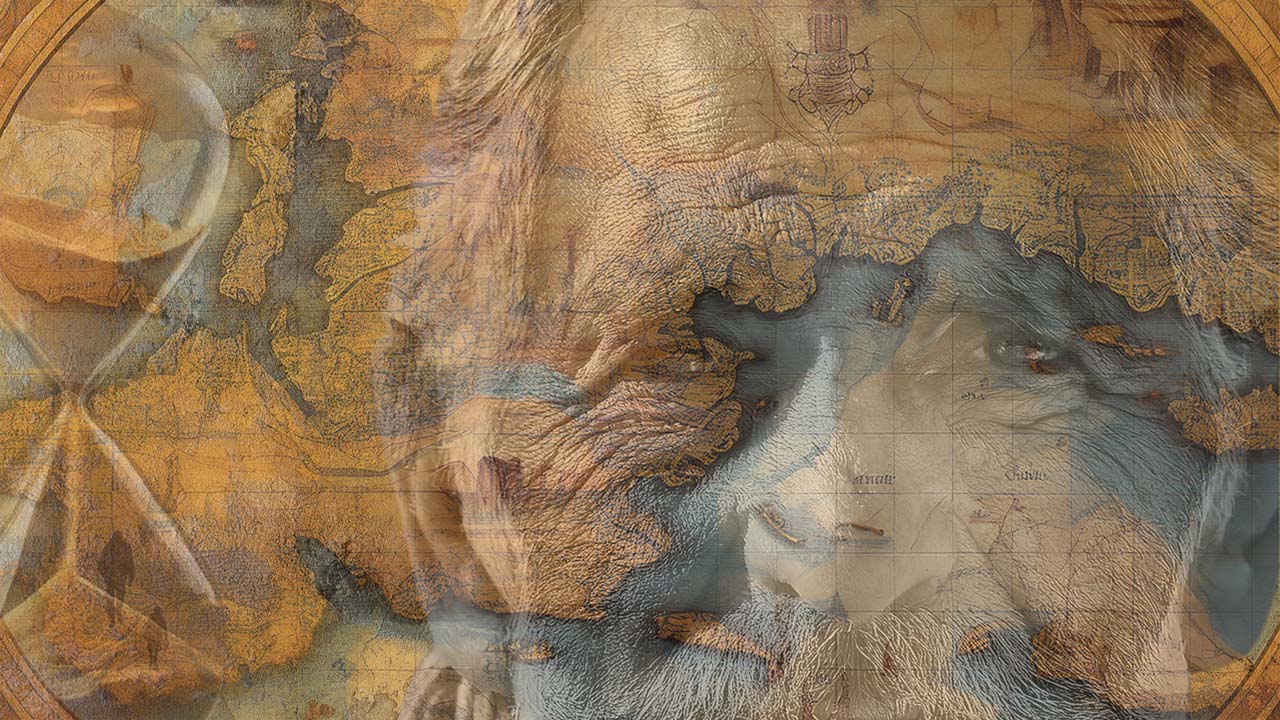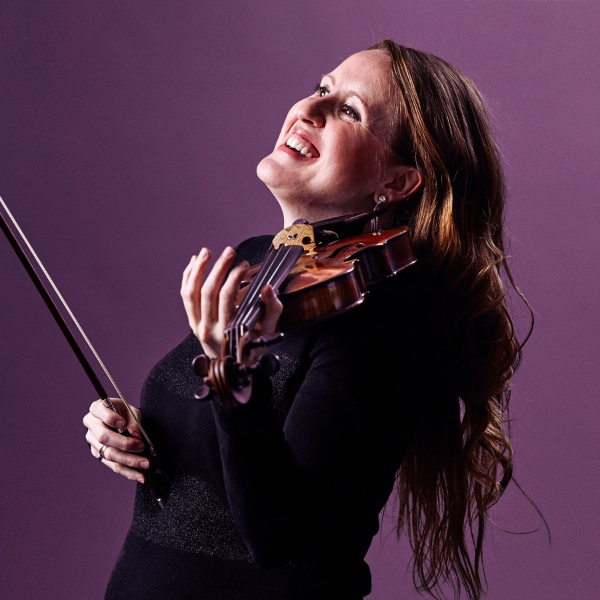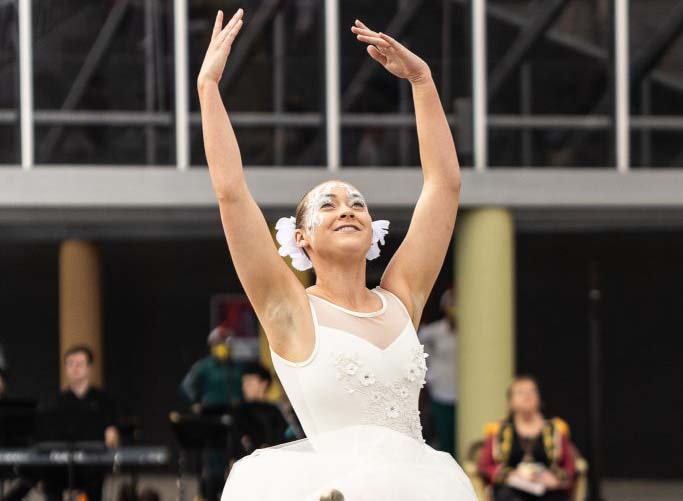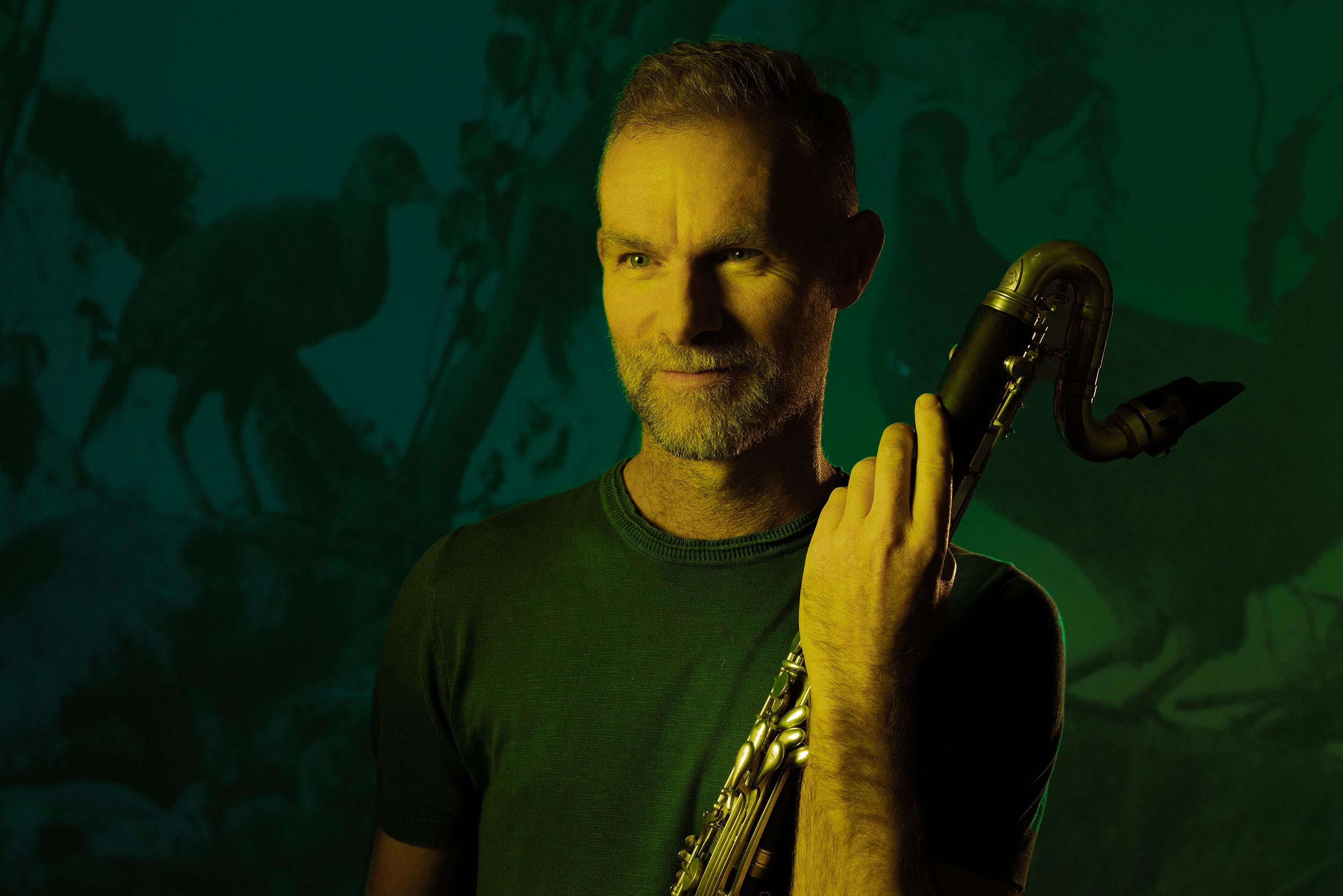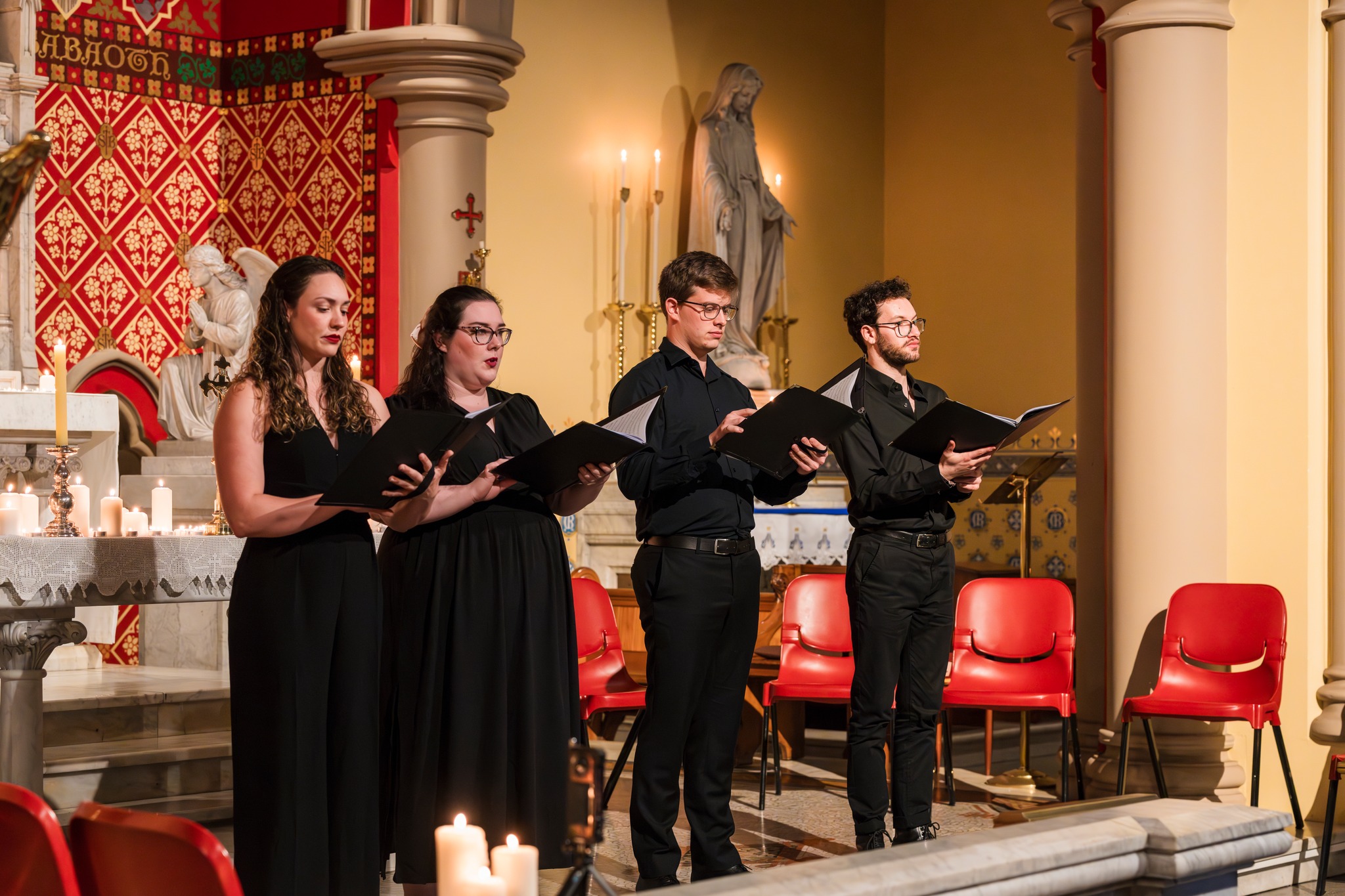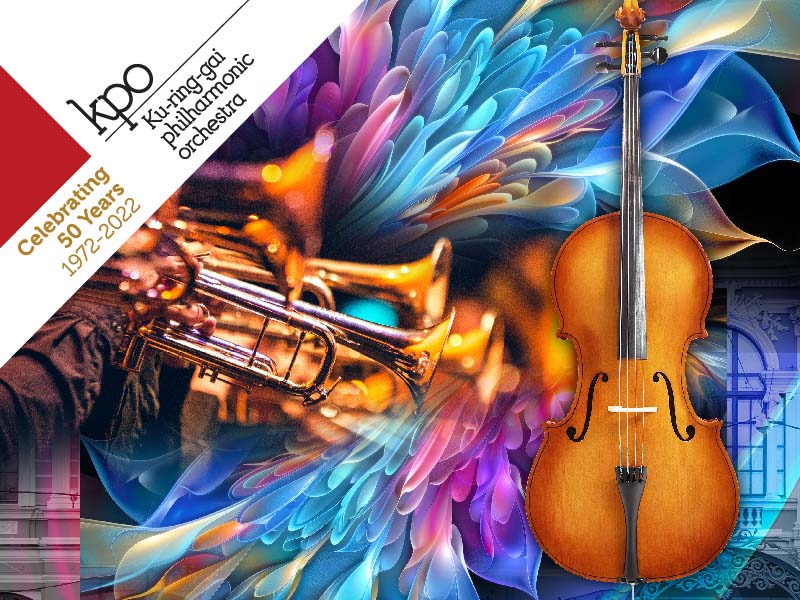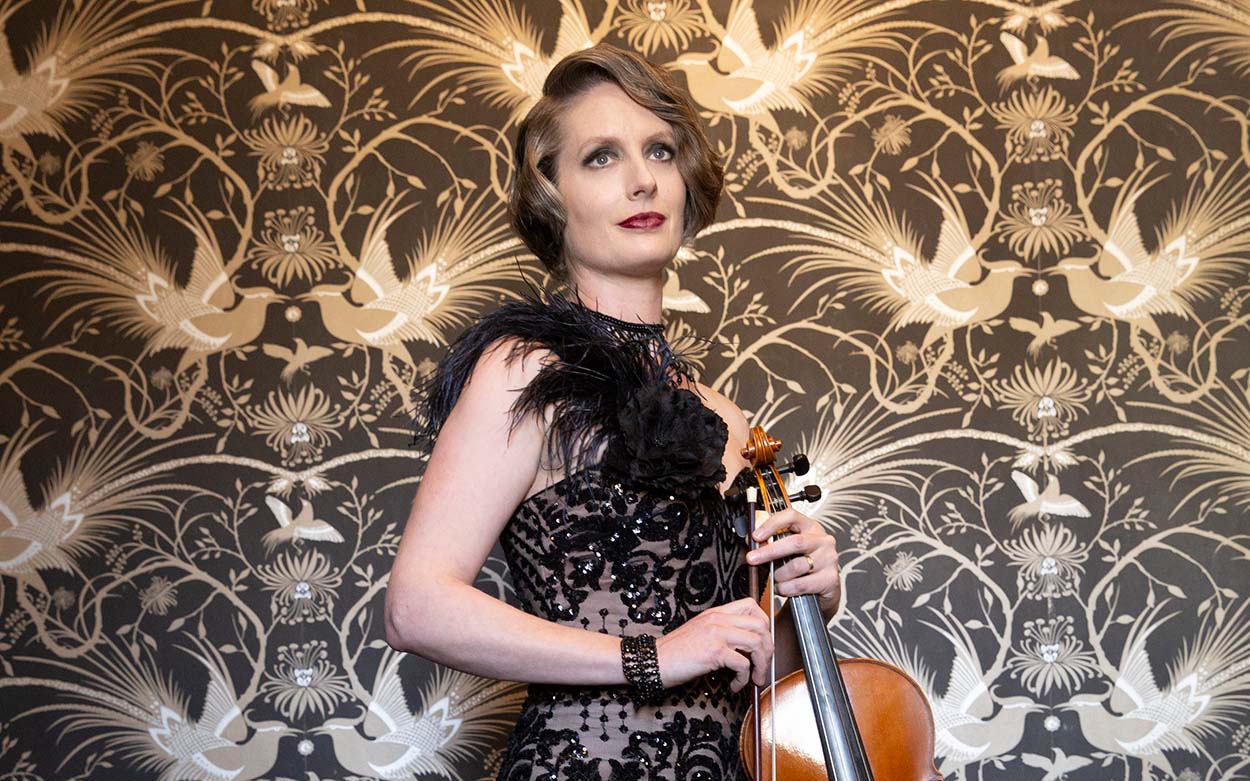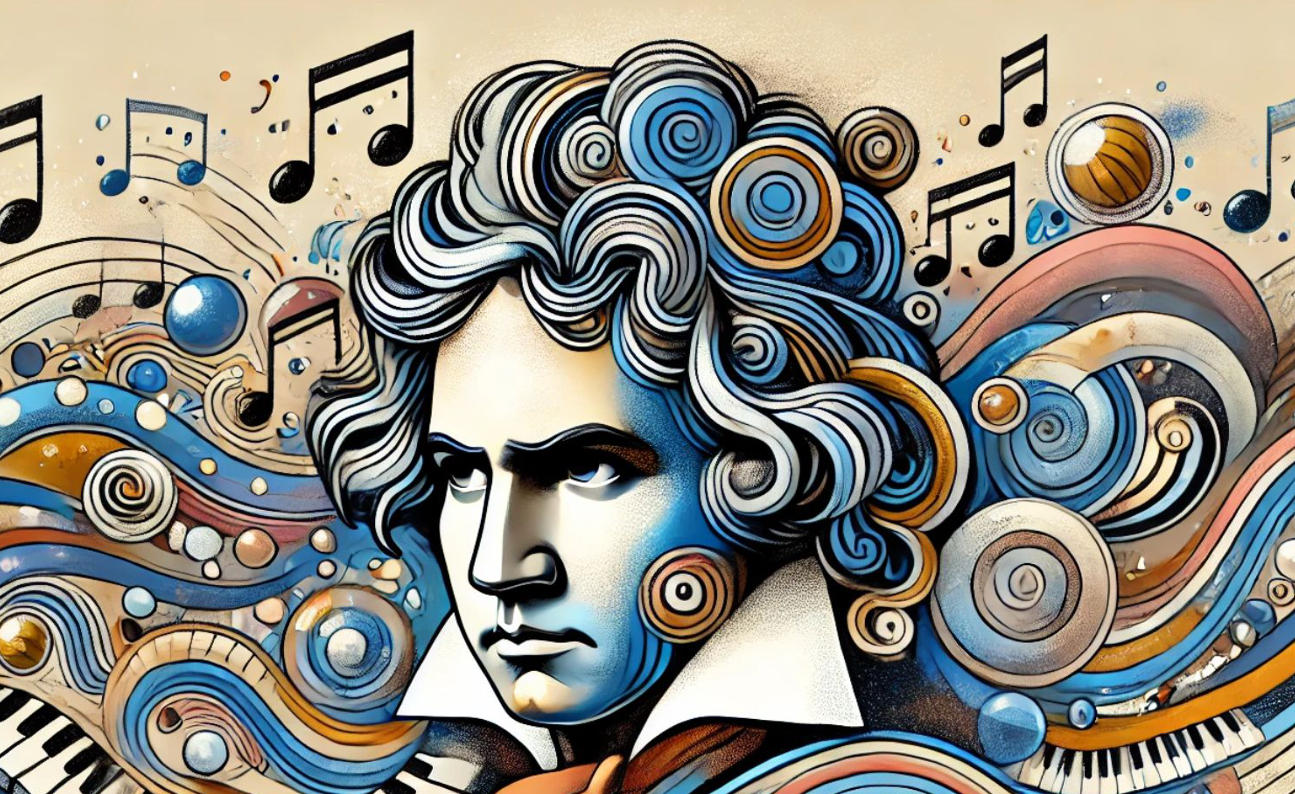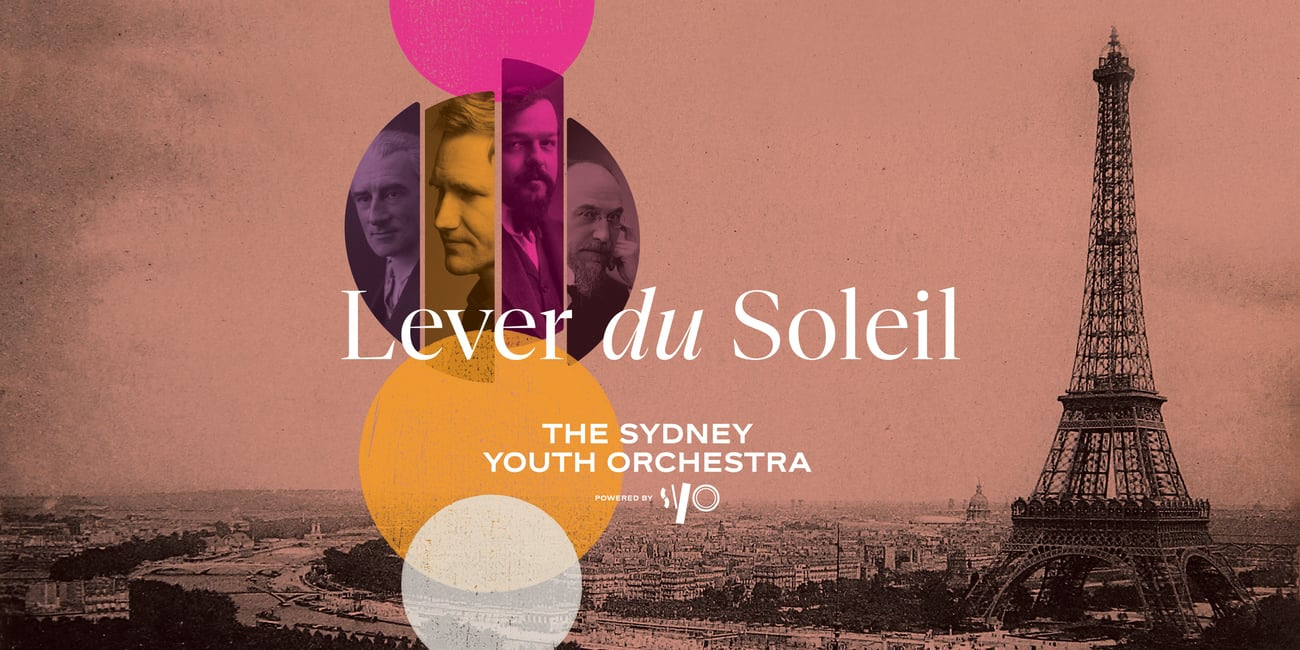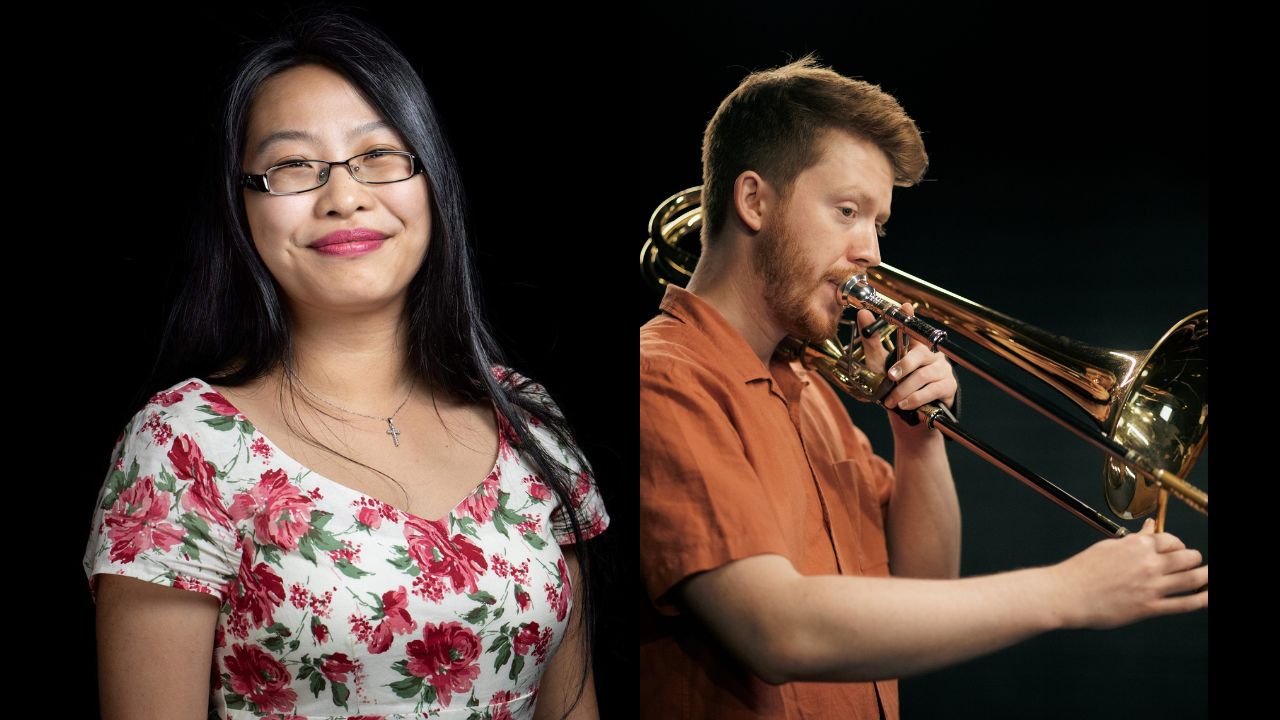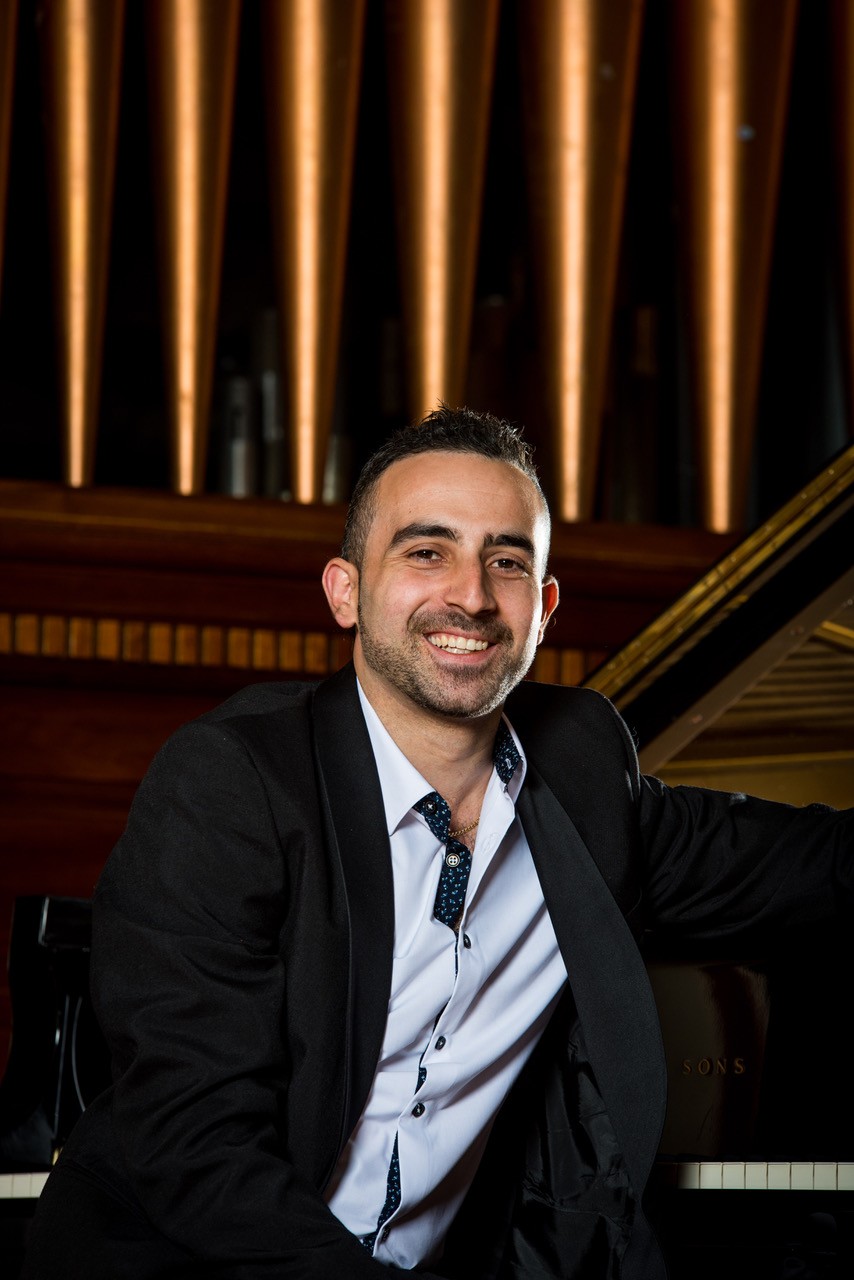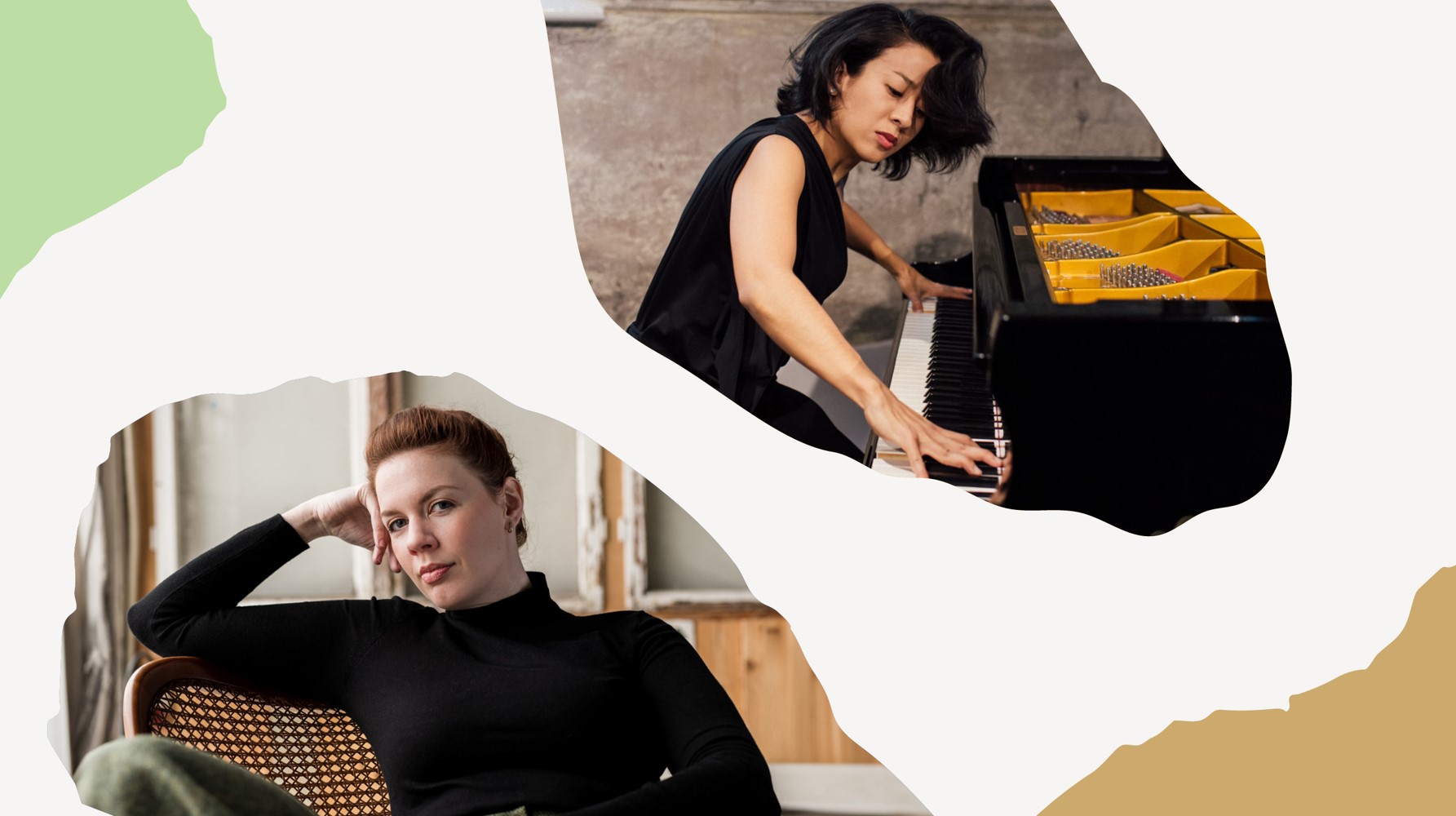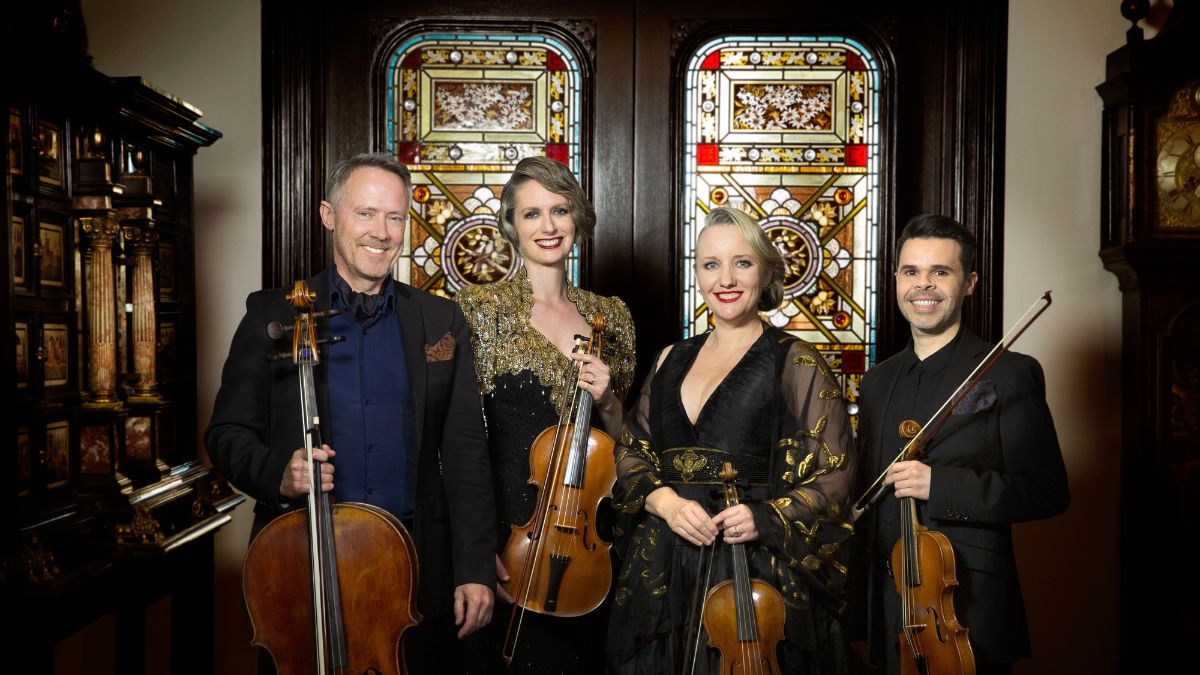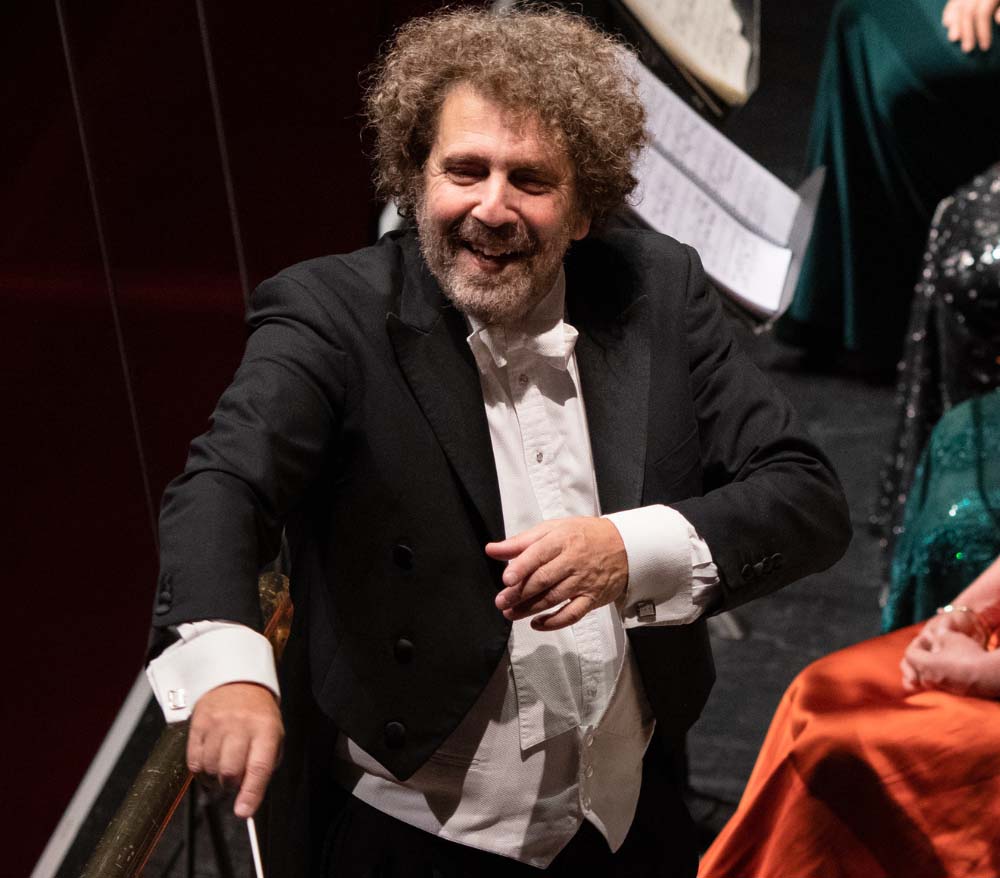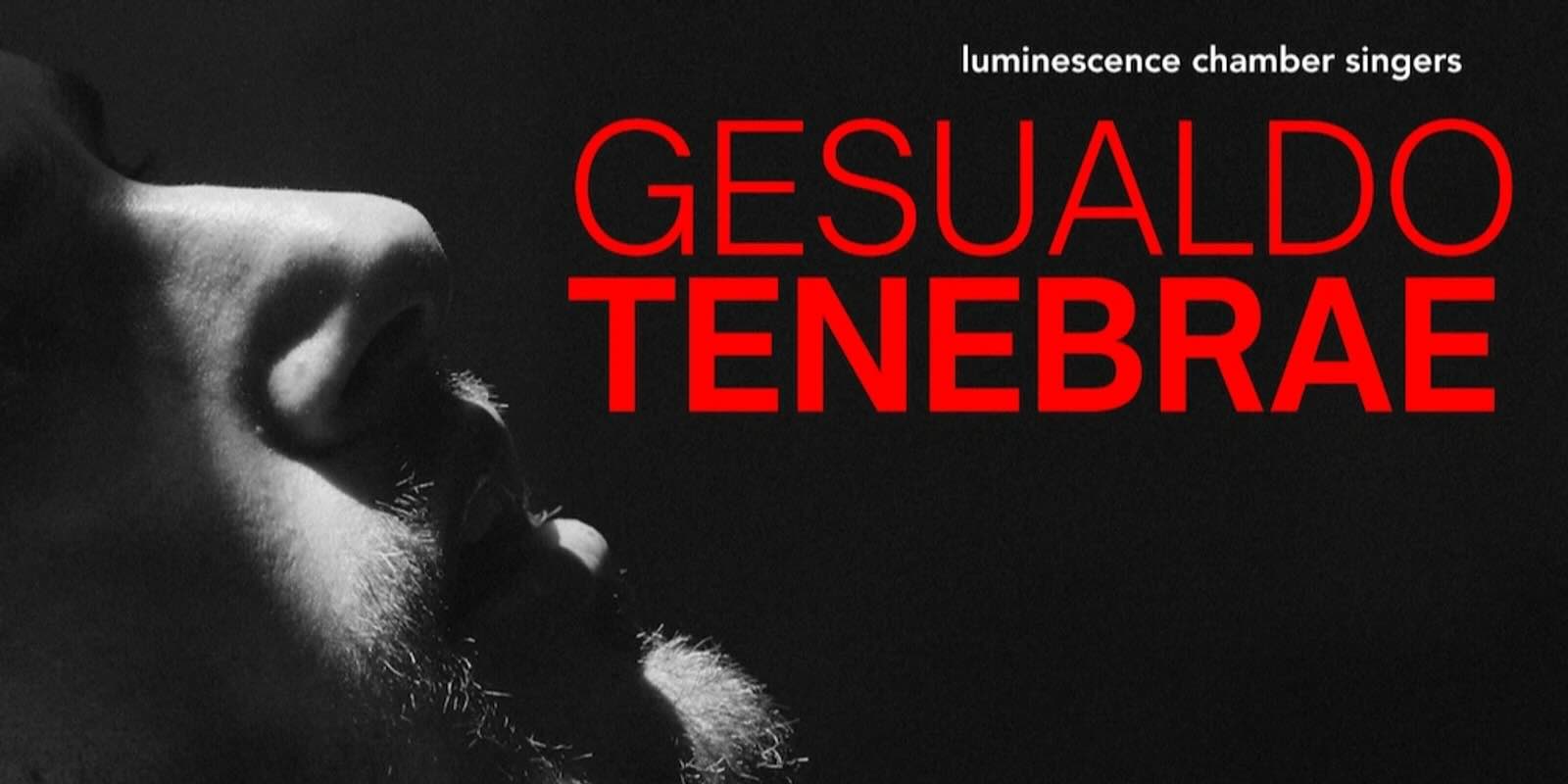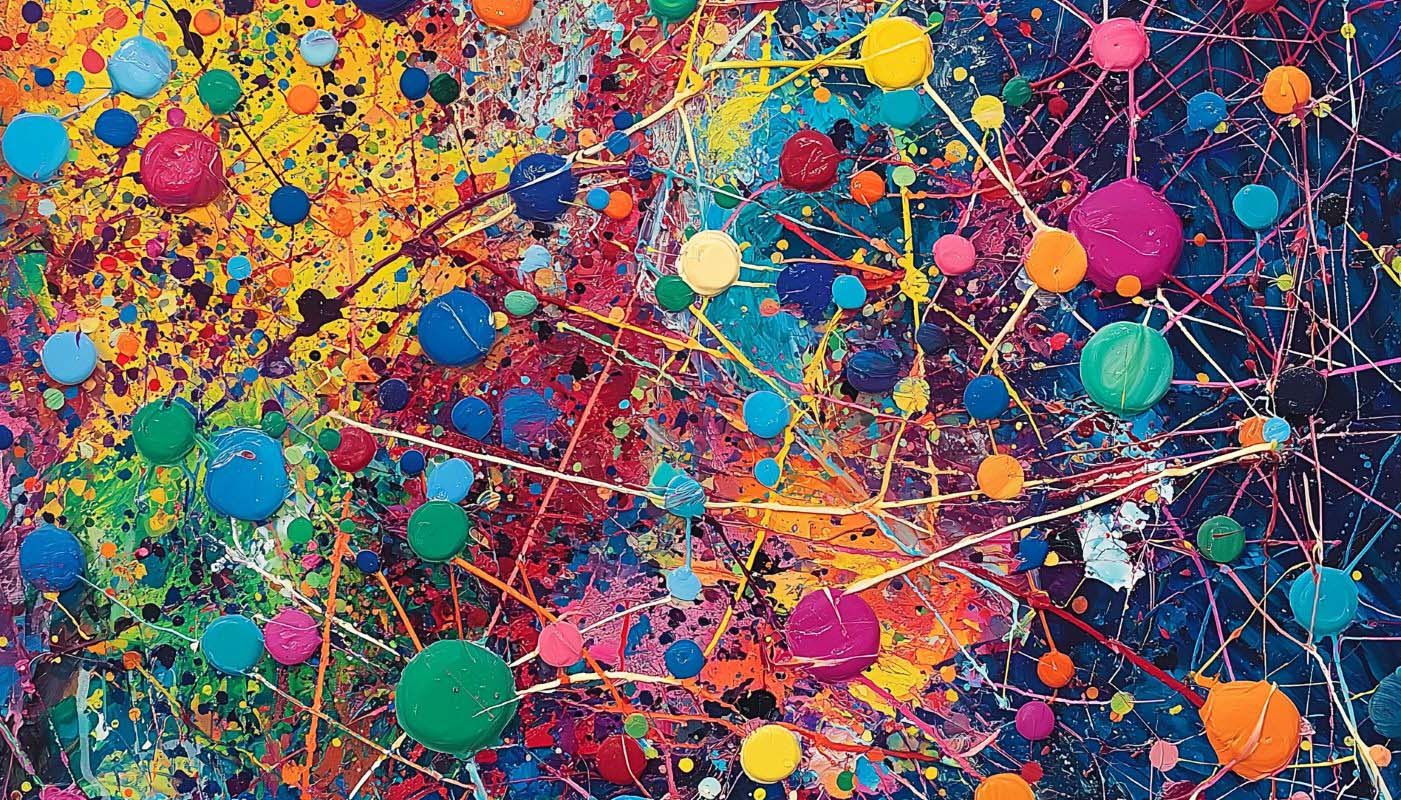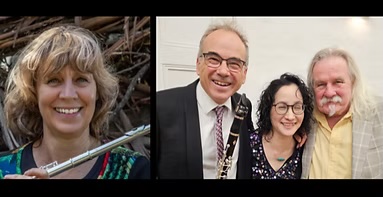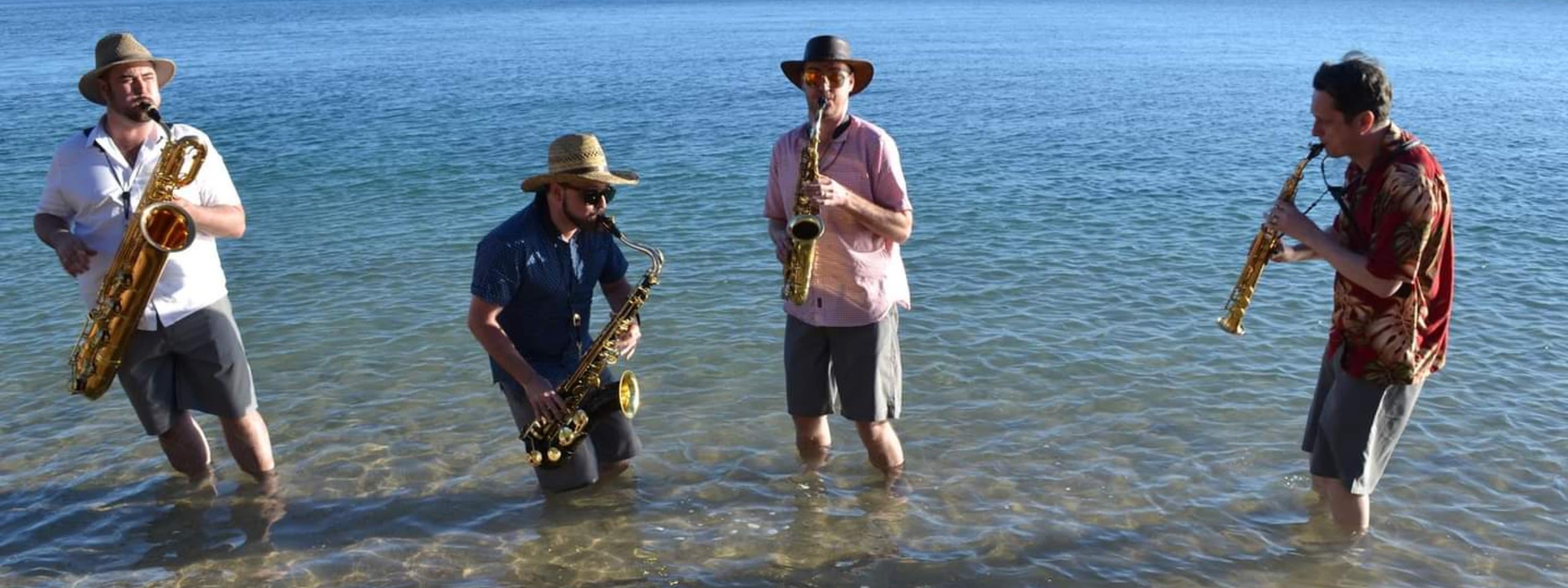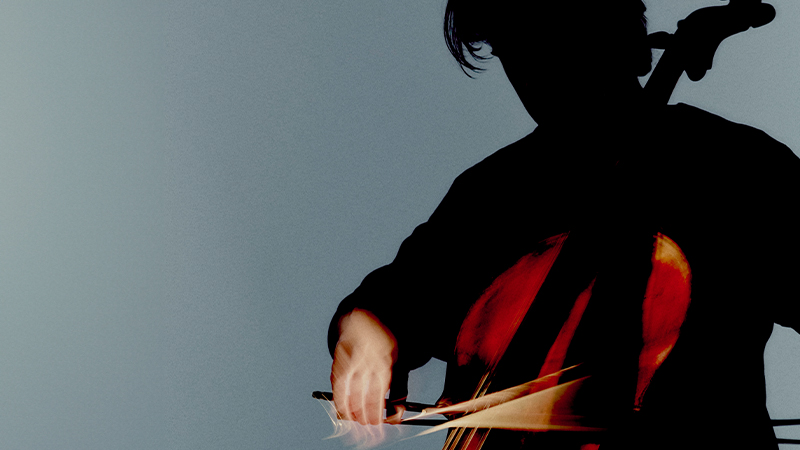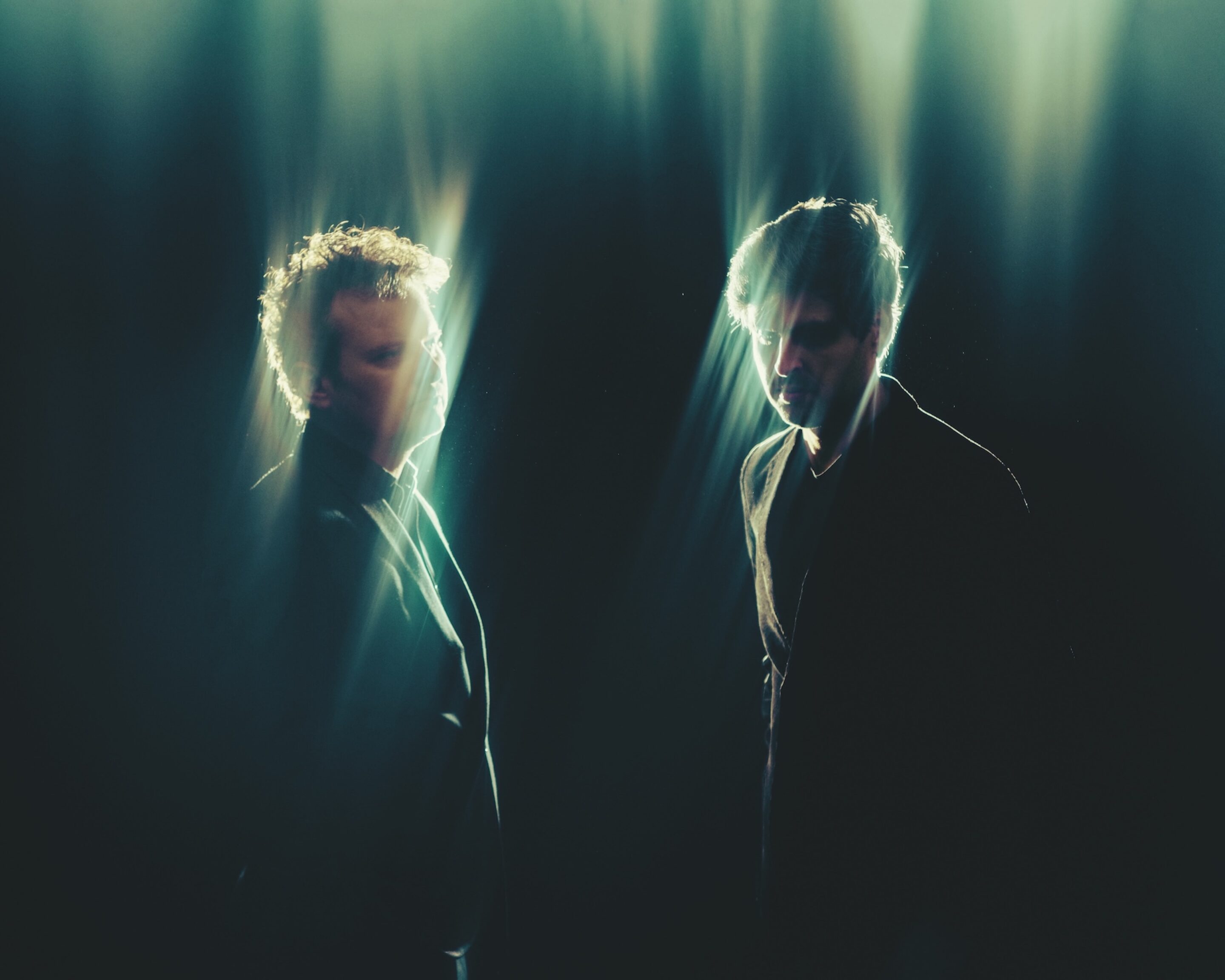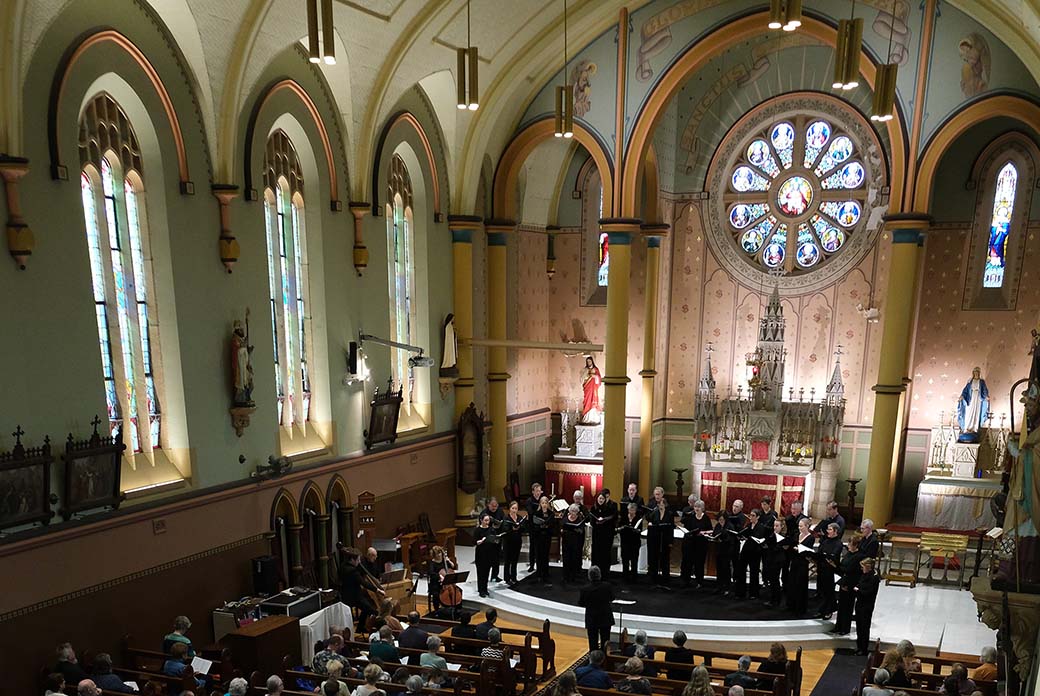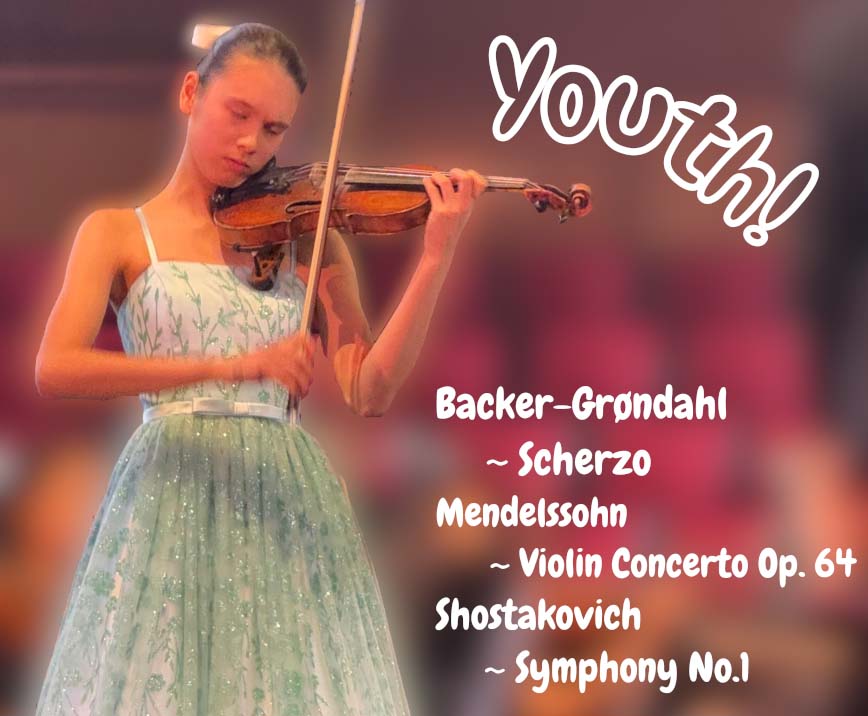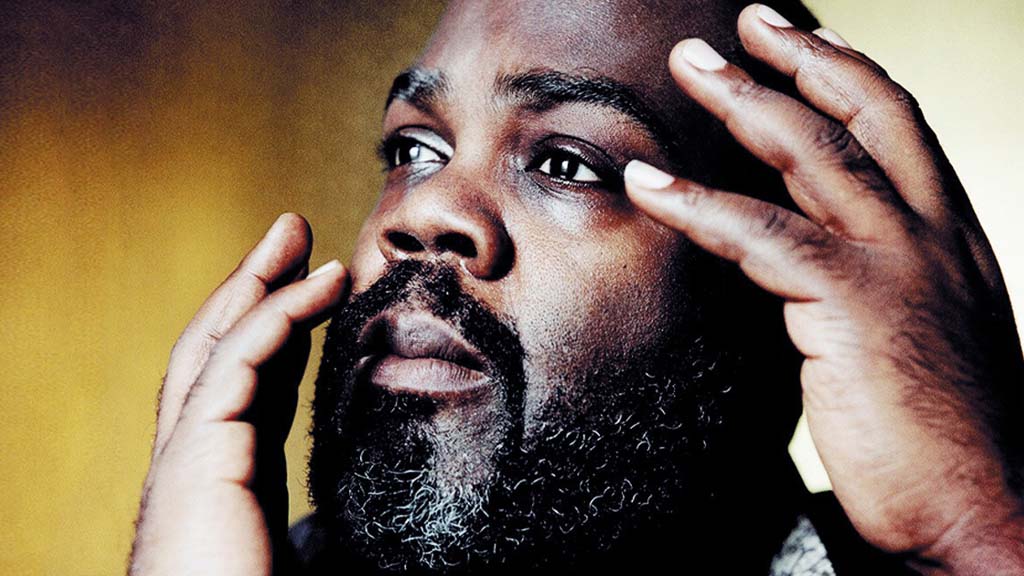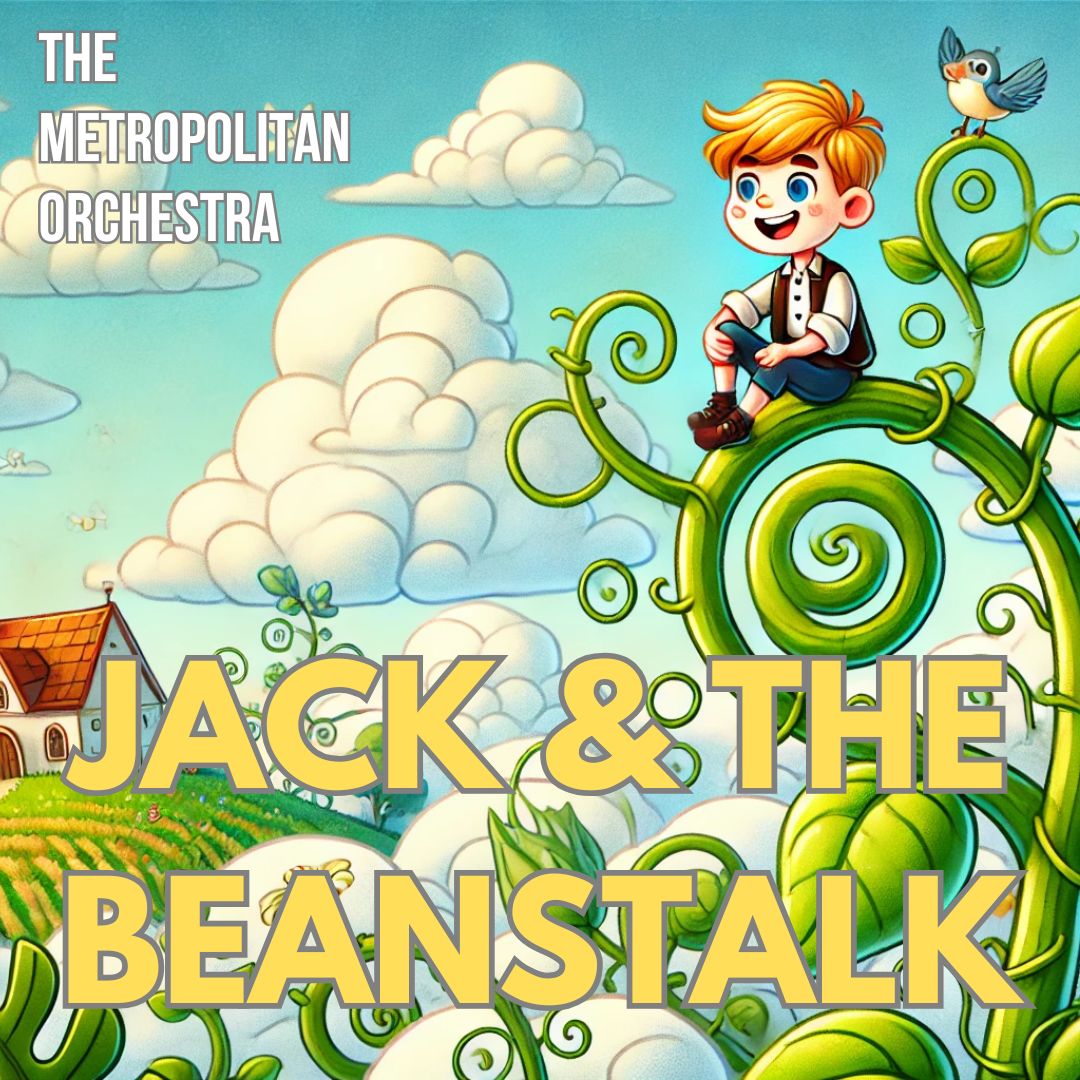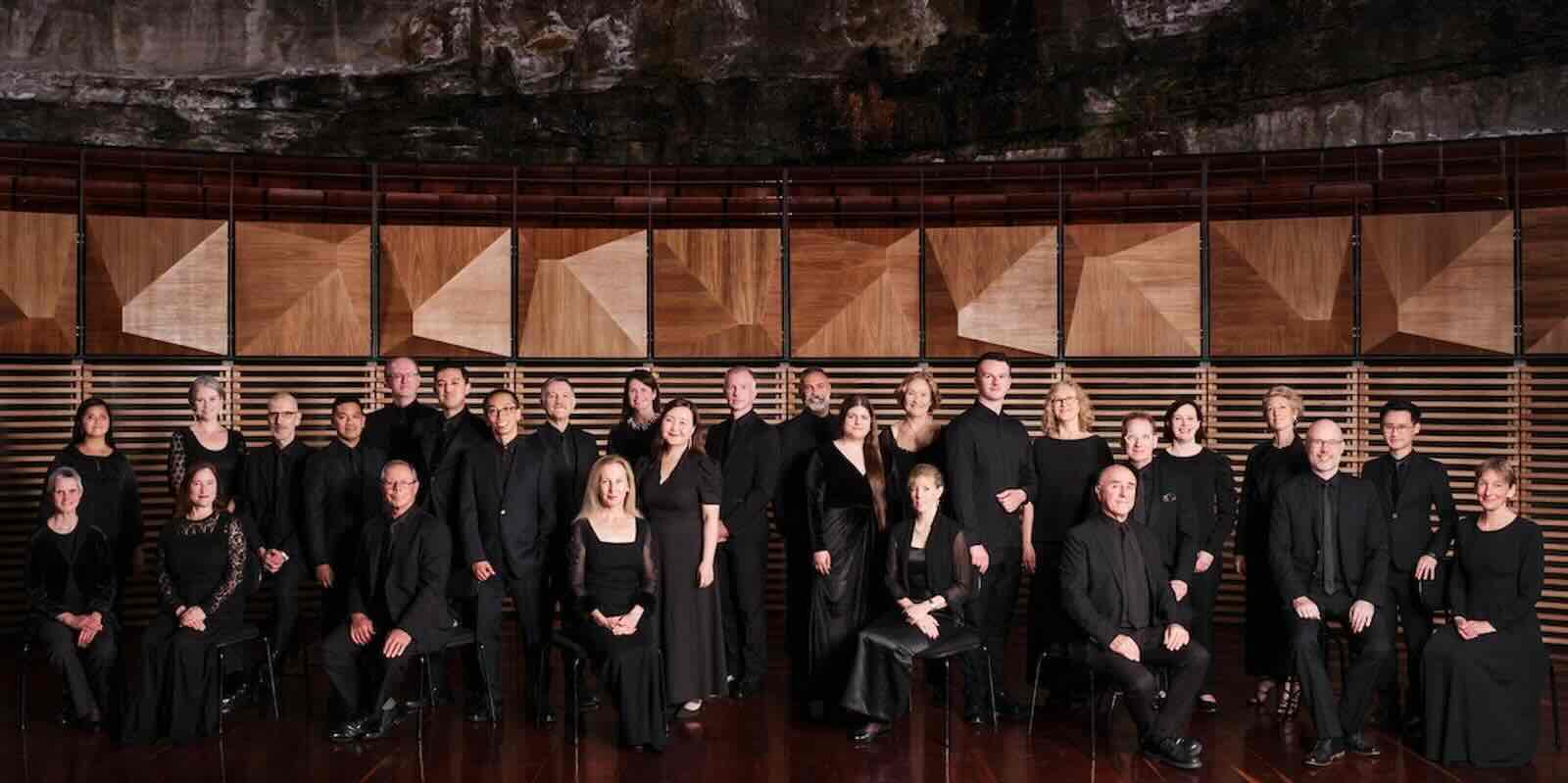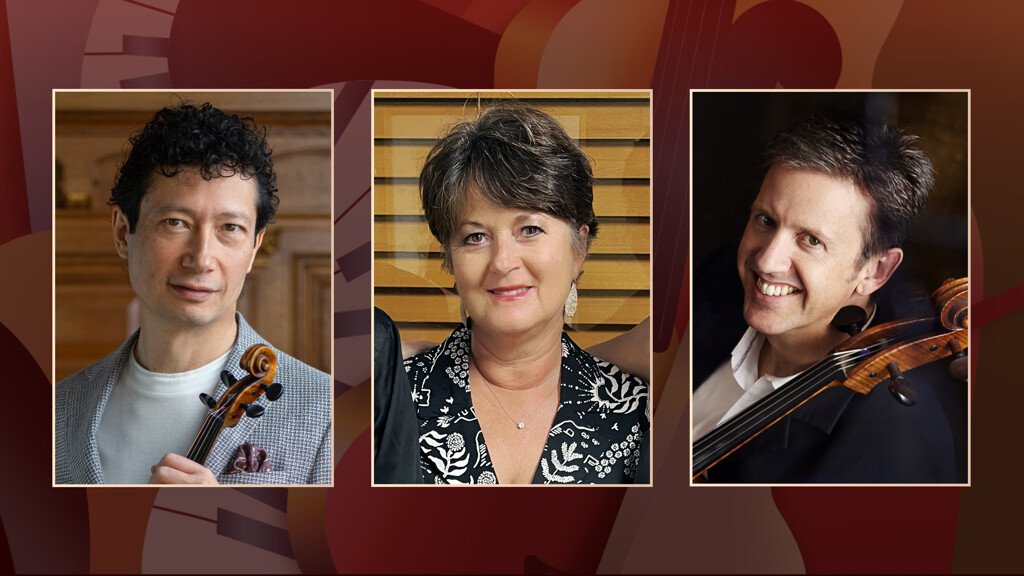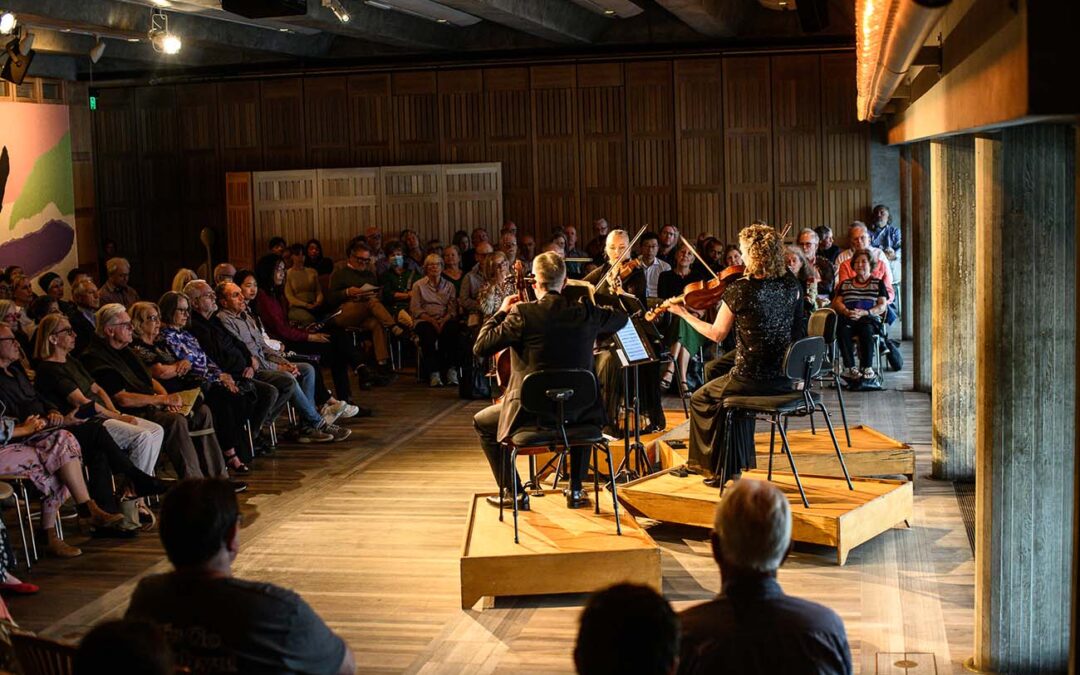Nexas Quartet’s collaboration with harpist Emily Granger at Old 505 last week was the closest I have yet come since Covid infected our lives to attending a live orchestral concert in the traditional sense – with each work on the program firmly in the tonal camp and the ensemble displaying a capacity for exquisite orchestral textures and phrasing.
Debussy bookended the concert, with the Danse Sacrée as the opening number and its Danse Profane counterpart rounding things off. These sibling works, familiar to many listeners in their original iteration for harp and strings, sounded perfectly at home being rendered by harp and sax quartet. This might have been due to the inherent Frenchness of the saxophone, but proved an eye-(and ear-)opening reminder of the versatility of this instrumental configuration.
American wind pedagogue Russell Howland’s Saxophone Quartet No.6 with harp was a nice complement to the Debussy, having a decidedly French flavour for the most part. Works like these make me wonder at the abundance of similar pieces from composers who were primarily academics. Though not exactly original, there’s usually a wealth of invention and sophistication on display, it is presumably very satisfying for musicians to play, and makes for pretty stimulating listening as well.
While soprano saxophonist Michael Duke was given a chance to shine in the first movement, the writing seemed fairly egalitarian and was an obvious vehicle for the collective ensemble, who navigated the array of colours, moods and musical styles with apparent effortlessness.
The harp was then given a solo feature through Laura Zaerr’s River Right Rumba, which seemed a perfect fit for Emily’s naturally exuberant performing style. The piece’s infectious C major undulations beautifully evoked the experience of its original inspiration – that of a kayaking trip through Northern Oregon – an experience I’m sure we could all do with right about now. Utilising an array of extended techniques, Emily confidently negotiated numerous metre changes and elicited a broad dynamic range from her instrument, all without losing the easy lilt that pervades the piece, nor the subtle smile on her face.
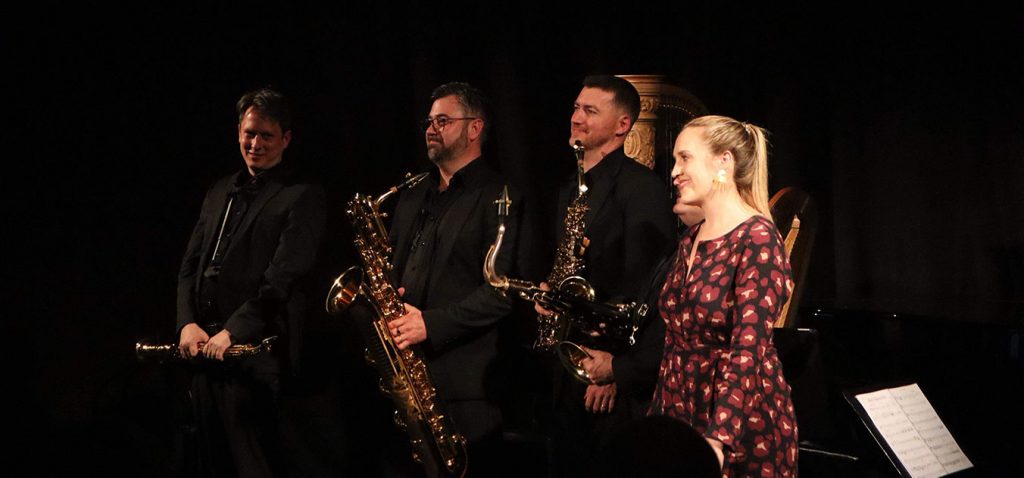
Faustin and Maurice Jeanjean’s Quatour pour saxophones was another brilliant vehicle for the sax quartet, with highly virtuosic writing which the ensemble carried off with expert aplomb. The soprano sax was again featured in the second movement, the instrument’s sonic resemblance to the cor anglais a further invocation of the symphony orchestra. Both the scherzo and the finale reminded me of Mendelssohn, the scherzo reminiscent of that from Midsummer Night’s Dream and the finale considerably alike to the one from his Violin Concerto. Those similarities didn’t detract from my enjoyment of the work however, the audience responding just as enthusiastically.
With two world premieres to follow, I thought perhaps we were in for something of a respite from unbridled tonality. That proved not to be the case, as Wijnand van Klaveren’s Song without Words plunged us deep into unabashed neo-Romanticism, about as Richard Strauss as it gets.
Who knew saxophones could be so Germanic as well?
Next came a similarly Germanic movement from Sydney composer Lyle Chan’s suite Gravity and Levity on the Sunbreathing Earth, a meditation on our year of Covid. This proved to be a bit of a revelation, as it was inspired by the writings of John Henry Mackay, of whom I had never heard. Turns out that Mackay was a turn-of-the-century Scottish writer who spent most of his life in Germany, and that both Strauss and Schoenberg set some of his poetry to music. It was therefore a rather apt choice to program these two pieces side-by-side, as the Straussian quality of the Song without Words beautifully complemented the Mahlerian airiness of Chan’s chosen movement- ‘Sonnenatmenden’ (“Sunbreathing”).
With more Debussy bringing things to a close on a somewhat languid note, it was a good choice to encore with a toe-tapper, the amusingly retitled Monti’s Charred Arse. With appropriately dazzling solos allotted to each Nexan, it was a great vehicle for the whole group and sent the audience out whistling a happy tune. Hopefully we’ll all see this year out in the same way.
Adam Jeffrey
14 Dec 2020
